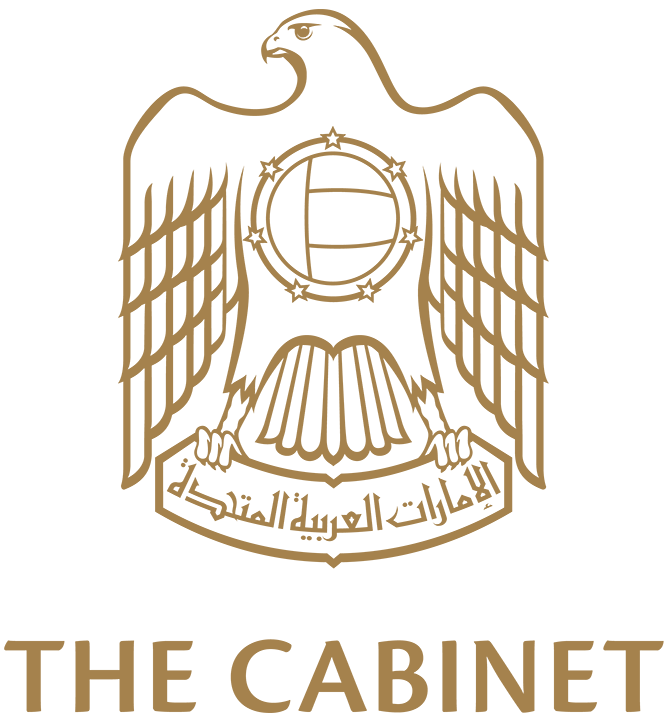- Article (1)
- Article (2)
- Article (3)
- Article (4)
- Article (5)
- Article (6)
- Article (7)
- Article (8)
- Article (9)
- Article (10)
- Article (11)
- Article (12)
- Article (13)
- Article (14)
- Article (15)
- Article (16)
- Article (17)
- Article (18)
- Article (19)
- Article (20)
- Article (21)
- Article (22)
- Article (23)
- Article (24)
- Article (25)
- Article (26)
- Article (27)
- Article (28)
- Article (29)
- Article (30)
- Article (31)
Article (1)
In application of the provisions of this Law, the following words and expressions shall have the meanings assigned thereto respectively, unless the context requires otherwise:
The State: the United Arab Emirates.
The Ministry: The Ministry of Industry and Advanced Technology.
The Minister: The Minister of the Ministry.
The Competent Ministry: The competent local authority in each emirate.
The Committee: The Committee for Controlling Trading in Precious Metals and Stones.
Hallmarking: Stamping precious metals with a mark indicating their type, legal standard of fineness and level of purity.
Official Hallmark: The Hallmark approved in the State by the Ministry.
Foreign Hallmark: The Foreign Hallmark recognized by the Ministry.
Registered Body: The local or foreign government body registered with the Ministry.
Accredited Body: The body that meets the requirements of the Emirates National Accreditation System (ENAS) in accordance with the Law on the Establishment of the Ministry of Industry and Advanced Technology.
Hallmarking Body: The body accredited or registered with the Ministry to stamp the precious metals with the official hallmark.
Certification Body: The body accredited or registered with the Ministry for certification in the field of precious metals and stones.
Precious Metals: Gold, silver, platinum, and platinum-group metals, whether in the form of wrought or unwrought articles.
Precious Stones: Natural organic and inorganic gemstones, artificial gemstones and semi-precious stones set out in the Executive Regulations of this Law.
Wrought Articles: Each piece wholly or partly made of a precious metal of purity not lower than the standards of purity specified in the Executive Regulations of this Law. Such articles shall also include alloys, medals and internationally circulated coins, coins that no longer have financial value or coins that have historical value.
Unwrought Articles: Unmanufactured precious metal alloys.
Articles of Low Fineness or Articles of Low Purity: Each piece of precious metal of purity lower than the standards of purity specified in the Executive Regulations of this Law.
Inlaid Articles: Each piece of precious metal or others inlaid with precious metals or stones.
Plated Articles: Each piece of precious or non-precious metal plated with a precious metal.
Legal Standards of Fineness: the figures showing the ratio of the pure precious metal in wrought or unwrought articles as well as the number of parts or fractions per thousand of pure metal by mass in such articles.
Millesimal: One part per thousand (1/1000).
Certificate: A document issued by the accredited or registered body, which contains identification details of precious stones, pieces of jewelry or precious metals in accordance with the resolutions issued in implementation of the provisions of this Law.
Identification Card: A card which is affixed, placed or attached to the precious stones, a piece of jewelry or wrought precious metals that cannot be hallmarked, and contains identification details of such stones and metals in accordance with the international standards defined by the Executive Regulations of this Law.
Article (2)
Legal standards of fineness of precious metals licensed pursuant to the provisions of this Law shall be determined as follows:
A. Gold Jewelry:
1. 24 karat gold, which is the pure gold and has a millesimal fineness of 999.
2. 22 karat gold, which has a millesimal fineness of 916.
3. 21 karat gold, which has a millesimal fineness of 875.
4. 18 karat gold, which has a millesimal fineness of 750.
5. 16 karat gold, which has a millesimal fineness of 666.
6. 14 karat gold, which has a millesimal fineness of 583.
7. 12 karat gold, which has a millesimal fineness of 500.
B. Silver Jewelry:
1. Standard of fineness of 999, which is the pure silver and has a millesimal fineness of 999.
2. Standard of fineness of 925, which has a millesimal fineness of 925.
3. Standard of fineness of 835, which has a millesimal fineness of 835.
4. Standard of fineness of 830, which has a millesimal fineness of 830.
5. Standard of fineness of 800, which has a millesimal fineness of 800.
C. Platinum Jewelry:
1. Standard of fineness of 999, which is the pure platinum and has a millesimal fineness of 999.
2. Standard of fineness of 950, which has a millesimal fineness of 950.
3. Standard of fineness of 900, which has a millesimal fineness of 900.
4. Standard of fineness of 850, which has a millesimal fineness of 850.
The Cabinet may add other legal standards of fineness, upon the proposal of the Minister of Industry and Advanced Technology, if necessary.
Article (3)
The Executive Regulations of this Law shall determine the precious stones and platinum-group metals in accordance with the international standards.
Article (4)
Sale, offering for sale or possession for the purpose of sale of wrought articles shall be prohibited unless they are stamped with the official hallmark or the foreign hallmark. If there is insufficient space on an article to be hallmarked, such article shall be accompanied by the Identification Card.
Article (5)
Precious metals, whether wrought or unwrought and precious stones may not be exported unless they are accompanied by the certificate or identification card as determined by the Executive Regulations of this Law.
Article (6)
The following shall not be covered by the provisions of hallmarking stipulated in this Law:
1. Unwrought Articles;
2. Official coins that no longer have exchange value or that have historical value or official medals of precious metals or inlaid metals that are offered or sold;
3. Antiques of historical and artistic value;
4. Equipment, tools and their parts used for the purposes of scientific, industrial or medical research;
5. Alloys not earmarked for sale, provided that they are accompanied by the certificate;
6. Articles of gold or platinum, and platinum-group metals of weight lower than one gram, and articles of silver of weight lower than five grams;
7. Precious metals fit for smelting and recycling and not fit for offering for sale or use;
8. Any other articles exempted by a resolution of the Cabinet upon the proposal of the Minister.
Article (7)
1. The Official Hallmark shall contain the following elements:
A. A mark denoting the type of the precious metal in accordance with the Executive Regulations of this Law.
B. The standard of fineness or purity of the precious metal in accordance with the Regulations of this Law.
C. The distinctive shape approved by the Ministry, which indicates the hallmarking body.
2. The Executive Regulations of this Law shall determine the mechanism and conditions of hallmarking and issuance of certificates of precious metals and stones.
Article (8)
The Executive Regulations of this Law shall regulate the provisions of trading in articles of low fineness, articles of low purity, inlaid articles and plated articles and the minimum size or weight of the precious stones, which do not require identification card or certificate.
Article (9)
If a wrought article contains precious stones, it shall be accompanied by the identification card or certificate showing the details of such stones in accordance with the Executive Regulations of this Law.
Article (10)
1. Plated wrought articles shall be stamped with the hallmark of the same wrought article.
2. If more than half the weight of the wrought article is made of a precious metal and the remaining of the wrought article is made of another precious metal or more, the wrought article shall be stamped with the hallmark of the heavier precious metal.
Article (11)
It shall be prohibited to sell precious stones as individual pieces, offering or possessing the same for the purpose of sale unless they are accompanied by the identification card or certificate showing the details of such stones as determined by the Executive Regulations of this Law.
Article (12)
The solder may not be used for the purpose of increasing the weight of a wrought article. Legal standards of fineness of solders to be used in wrought articles and the ratio thereof to the total weight of such articles shall be determined by a resolution of the Chairman in coordination with the competent Ministry.
Article (13)
1. No body may engage in the activity of hallmarking or certification of precious metals or stones unless such body is accredited or registered with the Ministry.
2. The Executive Regulations of this Law shall determine the required conditions for accrediting and registering the hallmarking bodies and certification bodies in the field of precious metals or stones in the State.
Article (14)
The Minister shall, in coordination with the competent Ministry, issue a resolution recognizing the official hallmarks of foreign states.
Article (15)
It shall be prohibited to hold exhibitions for wrought articles or precious stones without obtaining a license from the competent Ministry in accordance with the conditions and procedures specified by the Executive Regulations of this Law.
Article (16)
1. The hallmarking body shall be competent to determine the ratio of the pure precious metal in the article to be assayed or hallmarked and identify its type in terms of being wrought or unwrought.
2. The certification body shall be competent to identify the type and specifications of the precious stones.
Article (17)
1. There shall be formed, under a resolution of the Cabinet upon the proposal of the Minister and in coordination with the competent Ministry, a committee of experts and specialists to be known as the "Committee for Controlling Trading in and Hallmarking Precious Metals and Stones".
2. The Committee may seek assistance of experts and specialists, as it deems appropriate, to consult them in the matters referred thereto, but they shall have no vote.
3. The resolution forming the Committee shall determine its work system and remuneration of its members.
Article (18)
The Committee shall have the following competences:
1. Considering the reports referred to it by the Ministry or by the competent Ministry on the violations of the provisions of this Law, its Executive Regulations and the resolutions issued in implementation hereof;
2. Recommending to impose one of the following penalties, without prejudice to the penalties set out in this Law:
- Serving notice on the violator; or
- A fine of not more than (AED 50,000) fifty thousand dirhams.
3. Expressing an opinion on technical matters related to the implementation of the provisions of this Law, its Executive Regulations and the resolutions issued in implementation hereof, which are referred to it by the Minister or by the competent authority; and
4. Providing recommendations, proposals and periodic reports to the Minister on the matters referred to it to take the appropriate decision.
Article (19)
Any person upon whom one of the penalties stipulated in Article (18) of this Law is imposed may appeal the same before the competent court within thirty (30) working days from the date of being notified of the penalty.
Article (20)
Whoever commits one of the following acts shall be punished by imprisonment for no less than two years and/or a fine of no less than (AED 500,000) five hundred thousand dirhams and no more than (AED 1,000,000) million dirhams:
1. Stamping wrought articles with counterfeited hallmarks;
2. Deliberately selling, offering for sale or possessing for the purpose of sale wrought articles bearing counterfeited hallmarks or trading therein;
3. Counterfeiting the certificates of precious metals or stones;
4. Practicing the activity of hallmarking precious metals or issuing certificates in the field of precious metals or stones without being registered or accredited by the Ministry;
5. Making a change or alteration in wrought articles after being hallmarked, in any way that may make the same nonconforming to the standard of fineness stamped thereon;
6. Making a change or alteration in precious stones after issuing their certificates, in any way that may change the properties or features of the stone; or
7. Deliberately selling, offering for sale, possessing for the purpose of sale or trading in altered wrought articles.
Article (21)
Whoever commits one of the following acts shall be punished by imprisonment for no less than one year and no more than two years and/or a fine of no less than (AED 250,000) two hundred fifty thousand dirhams and no more than (AED 500,000) five hundred thousand dirhams:
1. Trading in wrought articles of precious metals without being hallmarked, subject to the provisions of Article (6) of the Law;
2. rading in the field of precious metals or stones without bearing an identification card or certificate issued by the certification body;
3. Trading in the field of precious metals or stones under a certificate issued by a body other than the certification body; or
4. Trading in wrought articles stamped with hallmarks other than the official hallmark or foreign hallmark.
Article (22)
1.Each accredited body shall be punished by a fine of no less than (AED 100,000) one hundred thousand dirhams and no more than (AED 500,000) five hundred thousand dirhams if it:
A. issues a certificate in the field of precious metals or stones, showing incorrect details thereof;
B. issues a certificate in the field of precious metals or stones, showing information not conforming to the reality of the metal or stone; or
C. stamps the wrought articles with a nonconforming hallmark.
2. In case of repetition, the penalty shall be doubled and the accreditation granted shall be cancelled.
Article (23)
Whoever violates any other provision of this Law shall be punished by a fine of no less than (AED 50,000) fifty thousand dirhams and no more than (AED 100,000) one hundred thousand dirhams.
Article (24)
The court may, upon conviction:
1. order to confiscate the articles subject matter of the violation;
2. order to close the shop for a certain period to be specified in the judgment;
3. rule, in case of repetition, to cancel the license.
Article (25)
The penalties stipulated in this Law shall not prejudice any severer penalty provided for in any other law.
Article (26)
The capacity of judicial officers shall be conferred upon the employees who are determined by a resolution of the Minister of Justice in agreement with the Minister and in coordination with the competent Ministry, each within his area of competence, to detect the violations of the provisions of this Law, its Executive Regulations and resolutions issued in implementation hereof.
Such employees shall have the required experience and competence in the field of precious metals and stones.
Article (27)
Licensing fees and charges of other services shall be determined by a resolution of the Cabinet upon the proposal of the Minister and in coordination with the Ministry of Finance.
Article (28)
The bodies subject to the provisions of this Law shall adjust their statuses in accordance with the provisions hereof within six months from the date of entry into force of this Law.
Article (29)
The Cabinet shall, based on the proposal of the Minister and in coordination with the competent Ministry, issue the Executive Regulations and resolutions necessary to implement the provisions of this law within six months from the date of its publication in the Official Gazette.
Article (30)
Any provision contrary to or inconsistent with the provisions of this Law and Federal Law No. (9) of 1993 referred to above are hereby repealed. The regulations and resolutions in implementation thereof shall remain in force, to the extent the same does not contradict with the provisions of this Law until the regulations and resolutions that supersede are issued.
Article (31)
This Law shall be published in the Official Gazette and shall enter into force six months from the day following the date of its publication.
Translated in cooperation with





